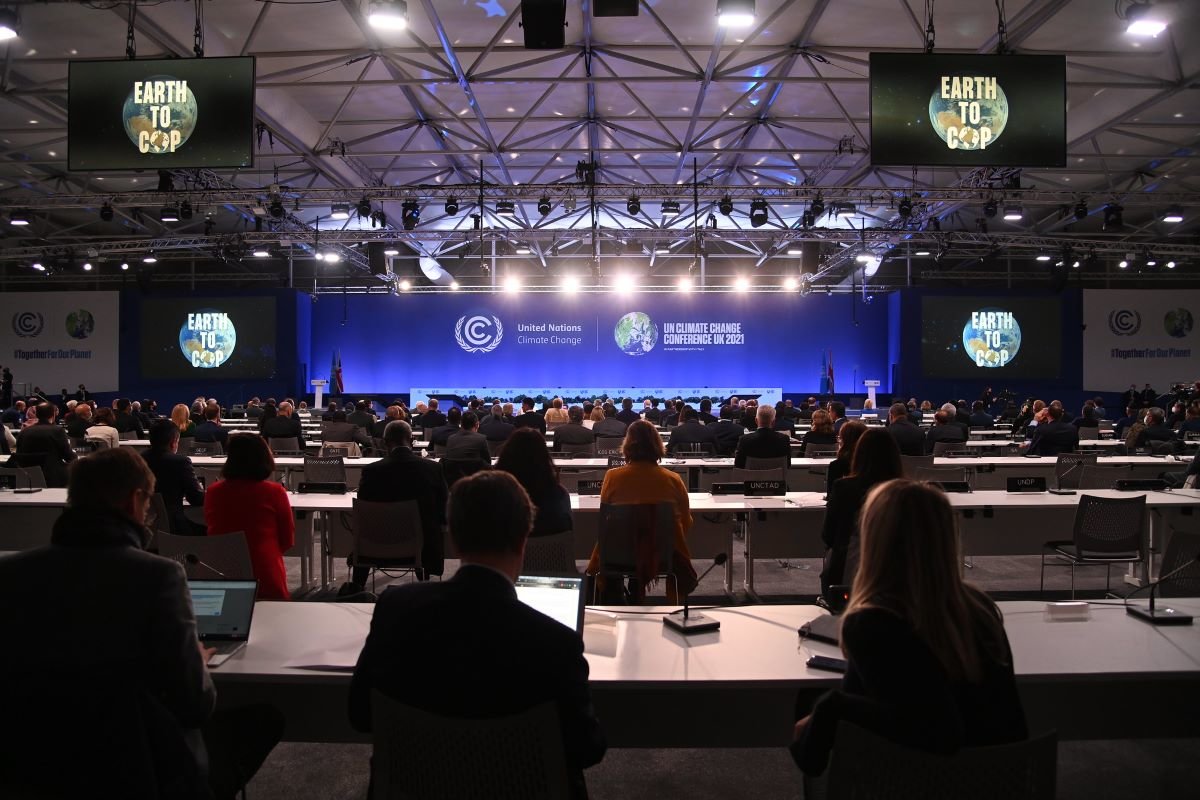Energy day at COP26 saw real progress made in the global coal-to-clean transition. However, the way the UK handled a swathe of announcements and press releases resulted in some confusion and scepticism as to what was delivered. We share our immediate reactions and then dive into the details.
In our Coal @ COP26 series, we cut through the confusion and identify how COP26 has captured momentum across data trends and political commitments:
- Ending international public fossil finance – oil going, gas going, coal gone
- No New Coal is now the norm
- Existing coal power heads for the exit
- New mechanisms and money to accelerate coal retirement
- Consigning coal to history – Energy Day untangled
E3G’s view is that across these critical elements of the global coal-to-clean transition, COP26 saw significant and substantial announcements that demonstrate positive progress under the UK COP26 Presidency, moving the world closer to ‘consigning coal to history’.
For the first time ever, coal was centre stage alongside the formal UNFCCC agenda. COP26 thereby provides a milestone moment for assessing progress. Energy Day brought together the different strands of action from the past decade and opened up new spaces for further efforts after Glasgow. We explore in the following blogs how each of these areas has moved forward.
Criticism from (UK) media
It is unsurprising that there is confusion among many COP-watchers around the coal announcements from COP26. The various press releases from UK Government (Number 10, BEIS) and the COP26 Presidency team pulled together a multiplicity of statements, declarations and announcements – some pre-existing, others new. These were packaged up, with numbers taken from each and combined, without a clear articulation of which announcements were new and which represented prior commitments.
In particular, there was an overlap between many of the signatories to the UK’s overarching ‘Global Coal to Clean Power Transition Statement’ and the membership of the Powering Past Coal Alliance. The PPCA itself grew to 165 members and had its own plenary event in the Energy Day agenda. The Statement provided a means of bringing together pre-existing initiatives such as the PPCA and the No New Coal Power Compact alongside other COP Presidency efforts on Clean Energy and Just Transition.
The aim was that the accessibility of the Statement would enable additional governments to step forward with initial efforts on the coal-to-clean transition. Indeed, over 20 countries used participation in the Statement to signal new or additional commitments to action.
The UK hoped that this approach would provide an overarching umbrella narrative of progress made to date and the future direction of travel. The Statement itself had a lower threshold for participation than PPCA membership, which requires formal commitments to no new coal, ending coal finance, and setting a coal phase-out date. The aim was that the accessibility of the Statement would enable additional governments to step forward with initial efforts on the coal-to-clean transition. Indeed, over 20 countries used participation in the Statement to signal new or additional commitments to action. This was a dynamic process: between the initial press releases going out and the events on Energy Day taking place, the numbers of participants changed and major coal countries were added to the list.
Some of this messiness was the inevitable outcome of real diplomacy in real-time. But the confusion could have been reduced with a clearer comms plan and simpler approach. The UK’s COP26 Presidency absolutely has a role to play in aggregating positive trends and country commitments across multiple elements of the coal-to-clean transition. But trying to shoehorn this diversity into one singular headline number resulted in nuance being lost while errors crept in, which fed media scepticism.
The UK’s COP Presidency absolutely has a role to play in aggregating positive trends and country commitments across multiple elements of the coal-to-clean transition. But trying to shoehorn this diversity into one singular headline number resulted in nuance being lost while errors crept in
The justified frustration with confusing messaging and messy delivery should not distract from the substantive progress, however. The following blogs set out our analysis of the key coal-related announcements and outcomes from COP26, situated in the context of the wider coal transition landscape.
Explore how COP26 has impacted the global coal-to-clean transition:
- 2021 witnessed a monumental shift: a conclusive end to international public finance for coal and the beginning of the end for international public finance for oil and gas.
- The COP26 Statement on International Public Support for the Clean Energy Transition includes a ground-breaking commitment to end international public fossil finance for all of coal, oil, and gas by 2022.
- The participation of energy financing heavyweights, including the G20’s largest fossil financier Canada, as well as the US, the UK, Spain, and Germany, is a historic step forward, creating pulling power for ending public fossil fuel finance.
- COP26 Energy Day saw the global trend towards No New Coal translate into new country commitments.
- 18 countries pledged to no longer build coal power plants, including Viet Nam, home to the world’s third-largest pre-construction pipeline.
- More than 60 countries have now committed to No New Coal, highlighting the momentum away from the world’s dirtiest fuel. No New Coal is now the norm, even for those governments not yet ready to commit.
- Multiple major coal countries reflect global trends with new commitments to phase out coal power generation through the Global Coal to Clean Power Transition Statement and membership of the Powering Past Coal Alliance (PPCA).
- Notable commitments were made by Viet Nam, Indonesia, Poland, South Korea, Ukraine, and the EU.
- Domestic implementation and international pressure are necessary to translate pledges into reality. Momentum away from coal increases pressure on laggards.
- Accelerating the retirement of the global coal fleet is essential to keeping warming below 1.5C
- The $8.5bn South African energy transition deal, coupled with multiple new initiatives aimed at retiring coal power plants, demonstrates the opening of a new chapter in the global energy transition – the accelerated retirement of the global operating coal fleet.
- These tools and financial commitments will be essential to ending the burning of coal in line with 1.5c pathways.
- A rather messy combination of Energy Day announcements at COP26 caused confusion, but reflect the realities of real time diplomacy.
- Major coal countries (Incl South Korea, Indonesia, Viet Nam) respond to global trends and political engagement with new commitments to phase out coal power generation and / or end new coal construction.
- A ‘Global Coal to Clean Power Transition Statement’ signed by 46 countries covers more operating coal capacity (267GW) than the US (232.8GW) or India (233.1GW).
- 28 new members (7 countries) of the Powering Past Coal Alliance mean almost two-thirds of OECD & EU governments are now PPCA members.
- A Statement on International Public Support for the Clean Energy Transition was signed by over 20 countries, including big historic fossil fuel funders US, Italy, and Canada, expanding the exclusion of coal finance overseas to oil and gas.
- The multiplicity of different overlapping statements and announcements shouldn’t distract attention from significant new commitments which represent major progress towards consigning coal to history.


